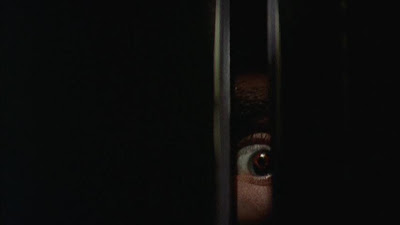The American Scream
(2012) Halloween may be over, but for a small group of dedicated individuals
known as house haunters, planning for October 31st is a year-long
process. This surprisingly insightful
documentary by Michael Stephenson (Best
Worst Movie) follows three families in Fairhaven, Massachusetts that set up
elaborate, immersive Halloween home displays.
We get an intimate look at what goes on behind the scenes to create
these displays, some of which blur the line between amateur and professional
efforts, and the people that make them happen.
Stephenson obviously has a lot of affection for his subject. His documentary could easily have been an
excuse to showcase the talents of a few eccentric goofballs, but instead takes
the time to get to know the human stories behind the obsession. The
American Scream chooses to focus on the sense of community generated as
family and friends band together for a common cause. The film is currently available through streaming
outlets or you can purchase it directly through the official web site. Highly recommended.
Rating: ****.
Available on Netflix Streaming and Amazon Instant Video
Hansel & Gretel
(2007) This bewildering adult fairy tale from writer/director Pil-Sung Yim is loosely
based on the classic children’s tale.
While driving home to his wife and child, Eun-Soo (Jeong-myeong Cheon)
loses control of his car and crashes. He
wakes up in a forest, and a young girl leads him to a house in the woods, where
she and her siblings reside. Everything
seems a little too bright and saccharine sweet for Eun-Soo’s taste, but the
trap has already sprung. He’s become
entangled in the children’s web, and escape is seemingly impossible. The story plays a bit like the “It’s a Good
Life” episode of The Twilight Zone,
but that’s over-simplifying things somewhat.
It’s a hallucinatory, nightmarish odyssey into a world fueled by childhood
psychological trauma.
Rating: *** ½.
Available on DVD and Netflix Streaming
Saint Nick (aka: Sint) (2010) Writer/director Dick Maas’
(The Lift, Amsterdamned) Christmas-themed horror flick starts promising
enough, with a prologue set in 1492, explaining Saint Nicholas’ (Huub Stapel) awful
origins and inevitable demise. The prologue
continues in 1968, in which a boy witnesses the resurrected saint murdering his
family. The bulk of the film takes place
in modern-day Amsterdam, as the boy, now a middle-aged cop (played by Bert
Luppes), pursues Saint Nicholas in an effort to prevent more holiday
bloodshed. Saint Nick is sporadically entertaining, but never really takes
off. What begins as an offbeat take on
Christmas traditions devolves into a rather pedestrian horror flick. The paucity of interesting or likable
characters makes it difficult to care who lives and who dies. Saint Nicholas, who resembles a combination of
Freddy Krueger and Santa Claus, never seems to display much logic in his selection
of victims, picking off people randomly. RareExports,
this isn’t.
Rating: ** ½.
Available on DVD and Netflix Streaming (Note: the streaming version is
dubbed in English)
Beyond the Black
Rainbow (2010) I really wanted to like this movie. Too bad it felt like a bunch of other movies
slapped together, with all vestiges of coherence leeched out. This pretentious, ponderous exercise plays
like an early 80s Cronenberg film (think Scanners),
and also borrows liberally from Kubrick, Argento and early George Lucas (THX 1138). Beyond the Black Rainbow suffers from many
of the same problems that plague 2009’s Amer,
being far too derivative and self-conscious of its inspirations to stand on its
own. A few interesting visuals don’t
compensate for all of the mumbling of quasi-profound dialogue, and scenes that
drag on way too long. Stay far away!
Rating: * ½. Available
on Blu-ray, DVD and Netflix Streaming.


















